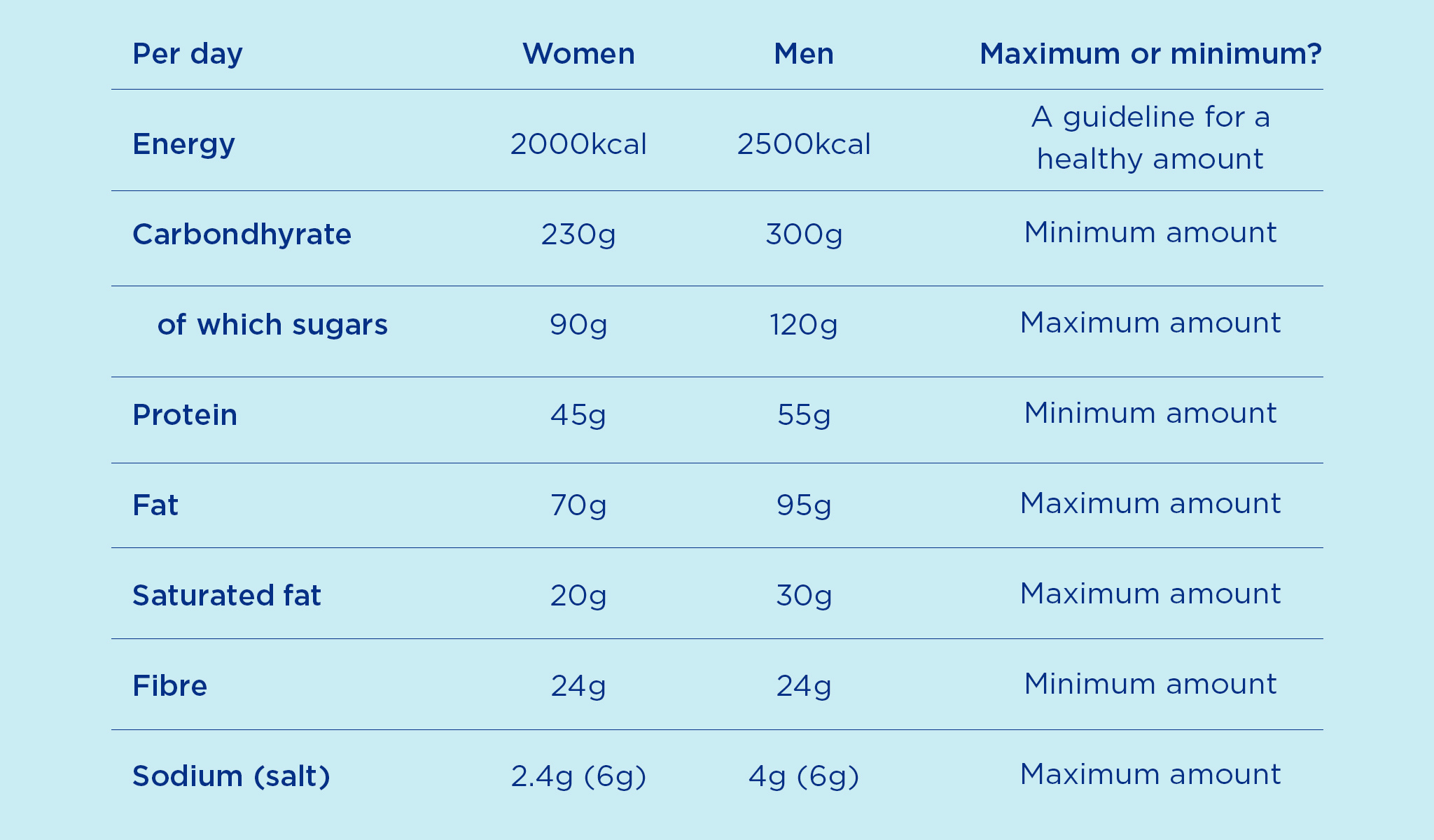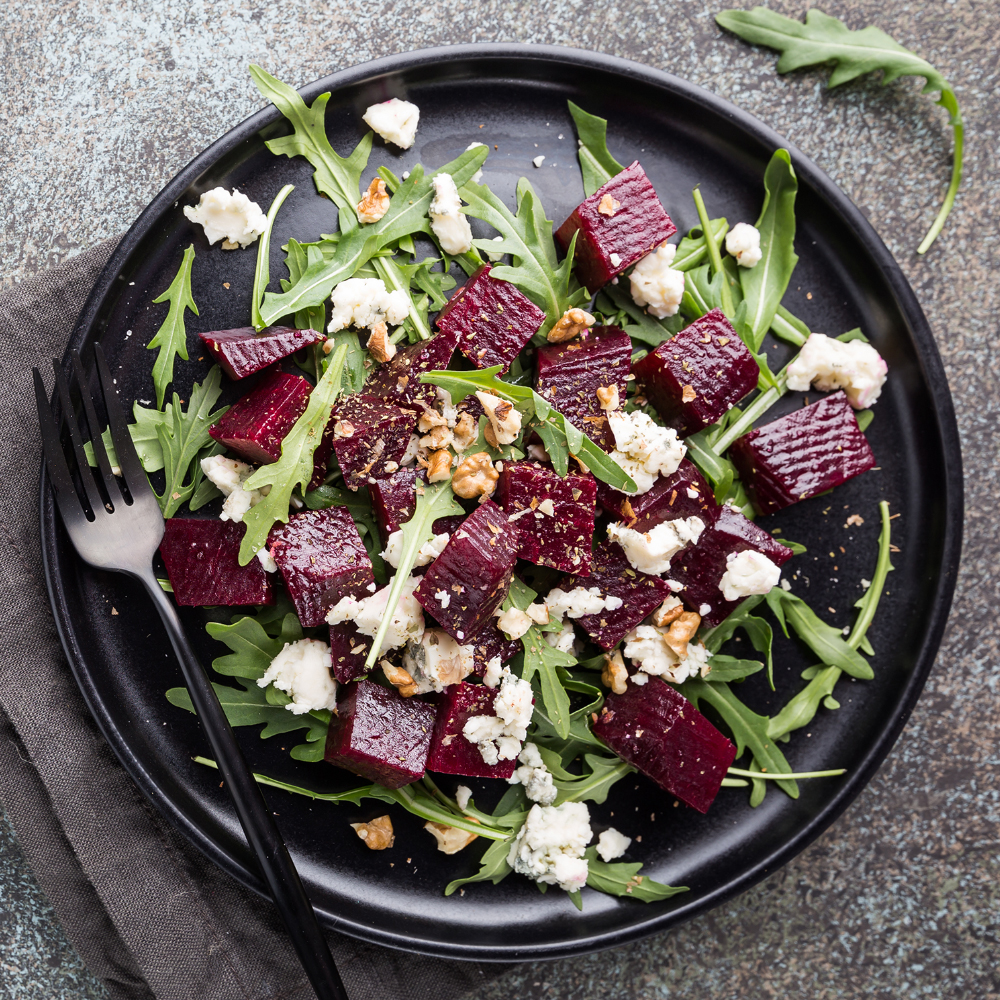Healthy Living
Just what is a balanced diet? What do the various nutrients in our food do, and how much of each of them do we need every day for a healthier body? We answer some of your questions and help you become a savvier shopper.
A guide to the guidelines
On many packaged foods you’ll see a chart like this, listing Guideline Daily Amounts (GDAs) – the number of calories and the amount of various nutrients recommended by the UK Government for a healthy, active adult. They’re not targets, but by comparing them with the amounts in the food we buy they can help us all make healthier choices.

Shopping for health
What’s on the list and why is it there? Here’s a run down of the items on the chart above explaining what they do and why we should be eating more or less of them.
The dreaded carbs – fact and fiction
“Carbs” often get a bad press, but healthy eating isn’t just about lettuce and lemon juice; while it’s true we should be eating less sugar, sustaining “slow release” complex carbs provide energy and, by making you feel fuller for longer, can be a great ally in keeping you trim. Healthy carbs should make up about a third of everything we eat. Just watch out for the fatty spreads and creamy sauces that tend to go with them!
Where to find them: Rice, pasta, bread, potatoes, cous cous and other grains such as barley and bulgur wheat.
Perfectly proportioned protein
Essential though it is in helping our body grow and repair itself, many of us eat more protein than we need to. Experts suggest two portions a day, a portion being either a piece of meat or fish about the size of a deck of cards, two eggs, or four tablespoons of cooked beans or lentils.
Where to find it: Meat, fish, milk, dairy products and eggs, and vegetable sources like beans, lentils and nuts.
Fats, good and bad
The fat we eat gives us energy and certain fatty acids we can’t make for ourselves, as well as helping us absorb certain other nutrients. The type of fat you eat – saturated or unsaturated – is every bit as important as the total amount.
Where to find them: Saturated fats are generally found in hard fat foods such as lard, butter, cheese and red meats, and have been linked to higher blood cholesterol levels and heart disease. So it’s a good idea to eat as little of these as possible. Unsaturated fats are found in vegetable oils and oily fish, and are a valuable part of a healthy diet.
Where to find them
Vitamins for vitality
Vitamins and minerals are the “micronutrients” that help keep us running smoothly, If you’re in good health, a varied diet including your “5 a day” should give you all you need without supplements.
Cleansing fibre
Strictly speaking, not a nutrient as most of the fibre we eat passes straight through our bodies, but fibre plays a vital role in keeping our digestive system moving. The soluble fibre in beans, lentils, fruit and vegetables can also help to lower cholesterol.
Sinful salt
Eating too much salt is linked to high blood pressure, so, like fat and sugar, it appears in the GDA charts as a maximum. Cut down bit by bit and you’ll soon get used to tasting your food rather than the salt.
The perfect meal
If calculating GDAs seems like too much hard work when planning everyday eating, another way is to think of food as a buffet made up of five different food groups; picking just the right amount from each one gives us a perfectly balanced plate of food – the “eat well” plate.



